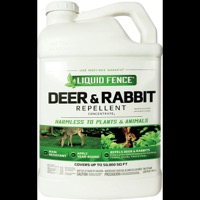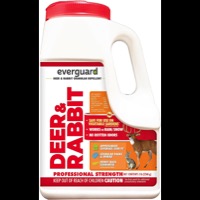How to Rabbit-Proof Your Garden
A Comprehensive Guide
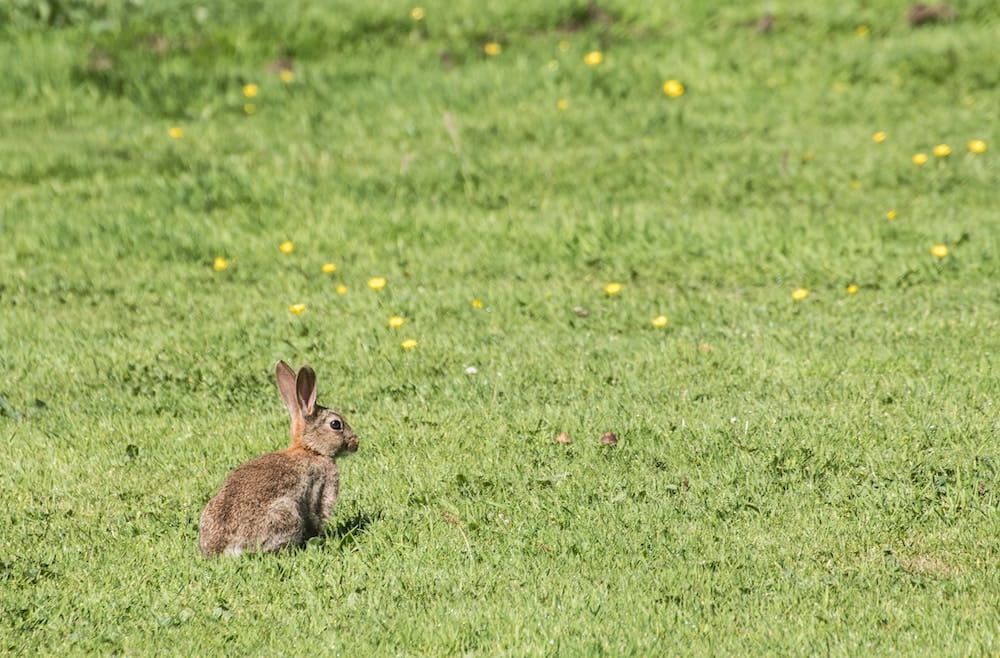
By Jess Simmonds, Expert Reviewer for Repellent Guide
published: Aug 05, 2023 | updated: Aug 05, 2023
As every gardener knows, there is a unique joy in seeing your plants thrive, your flowers bloom, and your vegetables grow. But what happens when uninvited guests start hopping in and nibbling away at your hard-earned greenery? Yes, we're talking about rabbits. Although adorable, these furry creatures can cause considerable damage to your garden. But fear not, fellow green thumbs! In this guide, we'll explore effective strategies to rabbit-proof your garden and protect your plants.
Understanding the Culprit
Before formulating a strategy to keep rabbits away from your garden, it's vital to understand these small mammals, their behavior, and what attracts them to your garden in the first place.
Biology and Behavior
Rabbits, belonging to the family Leporidae, are small mammals known for their long ears, fluffy tails, and strong hind limbs. They are prolific breeders, with females, known as does, capable of having several litters a year, each consisting of up to nine young, known as kits or kittens. This reproductive efficiency means that a small rabbit problem can quickly escalate into a significant issue if left unchecked.
Rabbits are crepuscular, meaning they are most active during dawn and dusk. These are the times you are most likely to spot them in your garden, nibbling away at your plants. During the day, they tend to hide in their burrows or other safe locations to avoid predators.
Diet
Rabbits are herbivores, with a diet consisting mostly of grass. However, they also eat a wide range of garden plants when available. Despite popular myths inspired by cartoons, carrots are not a major part of a rabbit's natural diet. They prefer leafy plants and will eat almost any vegetable, fruit, or herb in your garden. Plants such as peas, beans, beets, lettuce, and flowering plants like petunias are particularly attractive to rabbits.
Habitat and Shelter
Your garden provides more than just food for rabbits; it also offers potential shelter. Rabbits typically create nests in tall grass or burrows underground. The presence of dense shrubbery, tall grass, or other places to hide can make your garden particularly attractive to rabbits. They also tend to live in areas where they can quickly escape to cover, such as under a shed or a hole in a fence.
Seasonal Changes
Rabbits' behavior and diet can change with the seasons. In the spring and summer, fresh garden produce is very attractive to them. In contrast, during fall and winter, when food is scarce, they might resort to eating bark, twigs, and evergreens.
Understanding rabbits' biology, behavior, diet, and habitat preferences can help you make your garden less appealing to these creatures. It can also help you better appreciate why certain rabbit-proofing strategies are effective and others less so. In the next sections, we'll delve into these strategies, armed with our newfound understanding of our cute but troublesome garden visitors.
Fencing - Your First Line of Defense
Building a solid physical barrier is one of the most effective methods to keep rabbits out of your garden. But remember, these creatures are both nimble jumpers and skilled burrowers, so a simple picket fence won't do the job. Here's how to build a rabbit-proof fence:
Material and Design
The first thing to consider is the material. A strong, durable material like chicken wire or hardware cloth is an excellent choice. These materials have small mesh sizes, typically 1 inch or less, that prevent rabbits from squeezing through. Avoid using plastic netting, as rabbits can chew through this quite easily.
The design of the fence is equally important. Rabbits can jump, so your fence needs to be tall enough to prevent them from simply hopping over it. A height of 2-3 feet is generally sufficient.
Installing the Fence

While setting up the fence, there are a few critical points to remember. One of the main things to consider is that rabbits are notorious diggers. Therefore, the fence should not merely touch the ground but extend into it. Bury the bottom of your fence 6-12 inches underground to deter rabbits from burrowing under it.
For added security, bend the bottom of the fencing material into an L-shape facing outward. This creates a barrier that's more challenging for rabbits to dig under.
Access Points
Be mindful of gates or other access points in your fencing. Ensure these areas are also secure, and rabbits cannot squeeze through gaps or dig under them. Regularly inspect your fence for any signs of wear, damage, or potential weak spots and repair them promptly to maintain its effectiveness.
Considerations for Larger Gardens
For larger gardens, fencing the entire area might not be feasible. In this case, consider fencing off specific areas where the most vulnerable or attractive plants are located. Alternatively, individual plants can be protected with mini fences or cloches.
A well-planned and properly installed fence can provide a robust and long-lasting barrier against rabbits. While it may seem like a significant upfront investment of time and resources, it can save a lot of frustration, and potential plant loss, in the long run.
Natural Rabbit Deterrents
While fences and barriers provide excellent physical protection, it's also beneficial to implement measures that exploit rabbits' natural instincts and behaviors. These more organic, less intrusive solutions may be more appealing to gardeners who wish to deter rabbits without disturbing the aesthetic appeal of their garden.
Plant Choices
Interestingly, some plants act as natural rabbit deterrents. Rabbits are guided by their keen sense of smell, and certain plants give off fragrances that they find disagreeable. For instance, plants such as lavender, geraniums, and marigolds are often effective at keeping rabbits at bay. Similarly, herbs like oregano, rosemary, and sage also have scents that rabbits typically avoid.
Incorporating these plants into your garden layout can create a natural barrier against rabbits. Plant them around the perimeter of your garden, or intersperse them among your other plants to help protect more vulnerable species. However, remember that a hungry rabbit might still decide to nibble on these supposedly repellent plants, so it's best to use them in combination with other deterrent strategies.
Homemade Repellents
Many gardeners swear by homemade repellents, which can be a cost-effective and eco-friendly option. Recipes vary, but common ingredients include garlic, hot peppers, and vinegar, which have strong scents or flavors that rabbits dislike.
For instance, a simple homemade repellent spray can be made by blending two garlic bulbs with a quart of water and a small amount of dish soap. The soap helps the mixture stick to the plants, while the garlic deters rabbits. Spray this mixture on and around your plants, reapplying after heavy rain.
Remember, homemade repellents may not be as long-lasting as commercial ones and will need to be reapplied more frequently. Also, they may not be suitable for edible plants due to their taste-altering ingredients.
Creating a Less Welcoming Environment
Rabbits are prey animals and, as such, they prefer environments where they can hide from predators and quickly escape when they sense danger. By eliminating these features in your garden, you can make it less attractive to rabbits.
Try to keep your garden clean and free from clutter or piles of brush where rabbits might hide. Also, avoid overgrown areas or tall grass that could serve as a shelter. The more exposed your garden, the less likely rabbits will feel safe enough to venture in and feast on your plants.

Employing natural rabbit deterrents in your garden is a gentle way to protect your plants without causing harm to the environment or the rabbits. However, every garden and every rabbit population is unique, so some trial and error may be required to find the most effective methods for your specific situation.
Commercial Rabbit Repellents
In addition to homemade remedies and strategic planting, there is a variety of commercial products available designed to keep rabbits out of your garden. These repellents work on similar principles as the natural deterrents, exploiting rabbits' acute sense of smell and taste.
Types of Commercial Repellents
Commercial rabbit repellents come in various forms. Some are granules that you can sprinkle around your garden, creating a barrier that rabbits are reluctant to cross. Others are liquid sprays that you apply directly to your plants, making them taste unpleasant to rabbits.
The active ingredients in commercial repellents often include things like putrescent egg solids, garlic, capsaicin (the compound that gives hot peppers their heat), and sometimes even predator urine. These substances either smell bad to rabbits or make your plants taste bad, discouraging rabbits from dining in your garden.
Choosing the Right Repellent
When selecting a commercial repellent, it's essential to consider the specific needs of your garden. If you're trying to protect a large area, granular repellents can be more cost-effective. If you're dealing with a smaller space or specific plants you want to protect, sprays might be more suitable.
It's also crucial to consider the safety of other wildlife, pets, and children when choosing a repellent. Look for products that are marked as safe for animals and the environment. Some repellents can also be harmful to certain types of plants, so always read the label carefully before applying.
Using Commercial Repellents
To use these products effectively, follow the manufacturer's instructions closely. This usually involves reapplying the product after rainfall or after a certain period. Remember, commercial repellents may need to be used in conjunction with other methods for the best results. No single strategy is 100% effective, and using a multi-faceted approach will give you the best chance of keeping your garden rabbit-free.
Popular Brands
There are many brands available offering rabbit repellents. Some popular ones include Liquid Fence, Enviro Pro, and Ortho. Each brand and product has its unique strengths and may work better in some situations than others, so you may need to experiment to see what works best for you.
Commercial rabbit repellents can be a convenient and effective option for protecting your garden. While they require an upfront investment, the potential savings in terms of preserved plants and reduced frustration can be well worth the cost.
Trapping and Relocation
When other methods aren't providing enough protection for your garden, trapping might be an option to consider. However, it's essential to understand that trapping should be a last resort and it is heavily regulated in many areas due to ethical and environmental concerns.
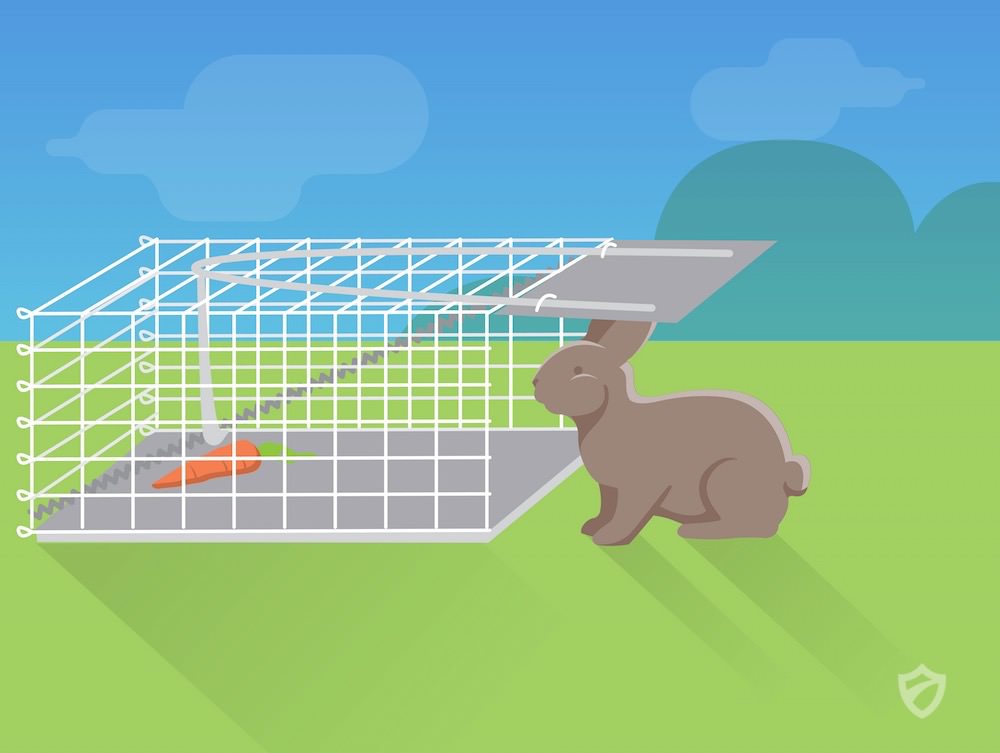
Know the Law
Before embarking on trapping, it's critical to check with your local animal control agency or wildlife service. In many jurisdictions, trapping and relocating rabbits may be illegal or require specific permissions due to the risk of spreading disease or disrupting local ecosystems. Understanding the law will help you avoid potential fines and ensure you're not unintentionally harming the local wildlife population.
Live Trapping
If you've got the all-clear to proceed, you'll want to use live traps to humanely catch the rabbits. These traps do not harm the rabbit but simply confine it until you can release it elsewhere.
A popular style of live trap for rabbits is a wire cage with a trigger mechanism. You place bait inside the trap, and when the rabbit enters to eat it, the trigger is activated, closing the door behind the rabbit. Leafy vegetables or apples can work well as bait for trapping rabbits.
Relocating Rabbits
Once you've caught a rabbit, the next step is to relocate it. This needs to be done carefully to minimize stress for the animal. It's best to release rabbits in a suitable habitat as far away from residential areas as possible, but within the legal distance set by your local regulations.
Cover the trap with a cloth to keep the rabbit calm during transport, and handle the trap gently to avoid frightening the animal. Upon arrival at the release location, simply open the door of the trap and allow the rabbit to exit on its own.
Alternatives to Relocation
Relocation is not always the best solution for the rabbit or the ecosystem. Alternative solutions could involve contacting a wildlife rehabilitation center or working with local wildlife officials to develop a more sustainable solution.
Remember, trapping and relocation should only be used when all other deterrent methods have failed, and local laws permit it. It's always better to try and coexist with local wildlife where possible, using humane and eco-friendly methods to protect your garden.
Professional Pest Control
If you've tried all the DIY rabbit deterrent methods and are still struggling with persistent rabbits, it might be time to consider professional pest control.
The Role of Professionals
Professional pest control companies have trained experts who can evaluate your specific situation and devise the most effective strategy to deter rabbits. They have access to specialized tools and products not available to the general public and can implement advanced strategies based on their extensive knowledge and experience.
When to Consider Professional Help
Consider hiring a professional if you've tried multiple rabbit control strategies without success, or if the rabbit population in your garden is large and causing significant damage. Professionals can also be a great help if you simply don't have the time to deal with the issue yourself or if you're uncomfortable handling animals.
Choosing a Pest Control Company
When selecting a pest control company, look for one with experience dealing with rabbits specifically. It's important to ask about their methods to ensure they are humane and environmentally responsible. Check reviews and ratings to find a company with a solid reputation.
Also, inquire about their follow-up process. A good company will offer monitoring services and provide a guarantee for their work. It's not just about getting rid of the rabbits currently in your garden, but also about preventing future infestations.
Cost of Professional Services
The cost of professional pest control varies depending on the size of your property, the extent of the rabbit problem, and the specific strategies used. It's advisable to get estimates from multiple companies to compare prices and services.
While hiring a professional is more expensive than DIY methods, it can be a worthwhile investment. These professionals have the expertise to solve the problem more quickly and effectively, saving you time and potentially reducing the overall damage to your garden.
Remember, while professional pest control can be highly effective, it doesn't replace the need for ongoing deterrent strategies. Rabbits are prolific breeders and can quickly re-populate an area. Continual measures such as repellents, garden management, and regular monitoring are still necessary to keep your garden rabbit-free.
Community Cooperation
An effective rabbit deterrent strategy goes beyond individual gardens. Rabbits don't respect property lines, so it's beneficial for neighborhoods to work together to control rabbit populations and protect their gardens.
Why Community Cooperation Matters
Rabbits can breed rapidly and migrate from one garden to another. Even if you've effectively deterred rabbits from your garden, they may still flourish in your neighbor's yard and continue to pose a threat. By working together as a community, you can implement broader strategies to reduce the overall rabbit population and protect everyone's gardens.
Creating a Community Plan
Developing a community rabbit deterrent plan can involve coordinating efforts to remove potential rabbit habitats, collectively using similar repellents, or even hiring a professional pest control service for the entire neighborhood.
To create an effective plan, consider organizing a meeting with your neighbors to discuss the rabbit problem and brainstorm potential solutions. You may also want to include local wildlife officials who can provide expert advice and help ensure that any community-wide efforts are legal and humane.
Education and Communication
A key aspect of community cooperation is sharing knowledge. Educating your neighbors about the impacts of feeding wildlife, the importance of removing potential rabbit shelters, and the benefits of rabbit-resistant plants can encourage more community members to participate in rabbit deterrence efforts.
Regular communication can also help track the effectiveness of your community plan. For example, you could create a neighborhood forum or social media group to share updates, success stories, and helpful tips.
Benefits of Community Cooperation
Community cooperation can make rabbit deterrent efforts more effective and efficient. Sharing the costs of professional pest control services or bulk purchasing of rabbit repellent products can save money. Plus, a community working together can often achieve more than individuals working separately.
Remember, community cooperation doesn't mean that every neighbor needs to do the exact same thing. Each garden is unique, and what works for one might not work for another. The goal is to share knowledge, resources, and efforts to create a more comprehensive and effective rabbit deterrent strategy.
Conclusion: Maintaining a Rabbit-Free Garden
Maintaining a rabbit-free garden is an ongoing process, not a one-time task. It requires consistent efforts, careful monitoring, and potentially a combination of several methods.
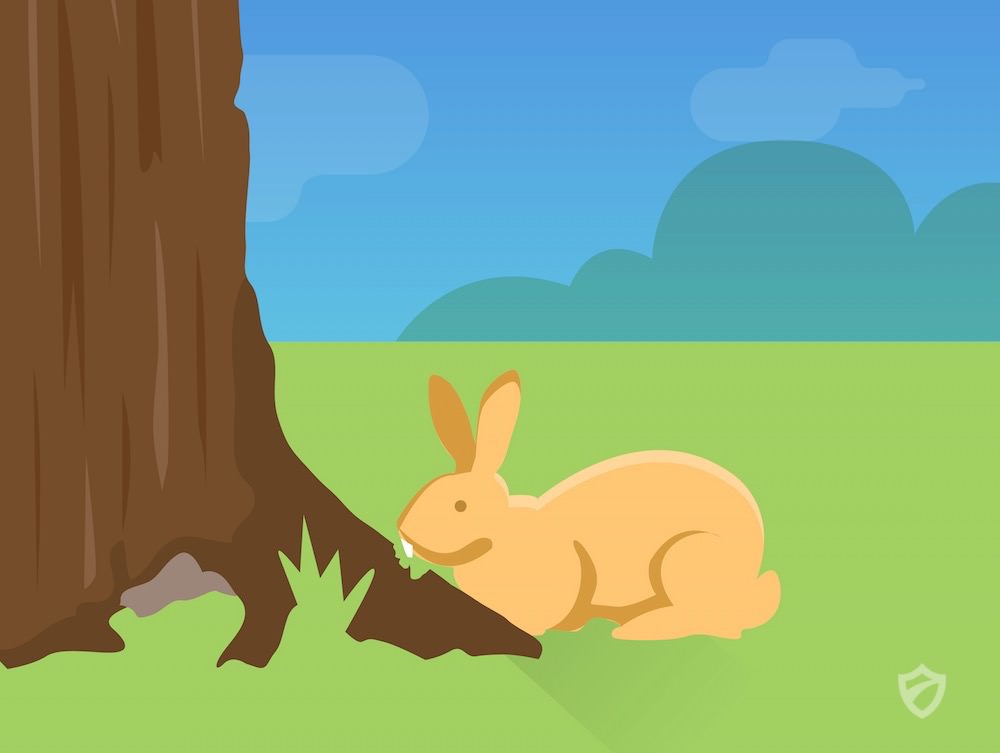
Persistence is Key
Rabbits are persistent creatures. Even after you’ve implemented deterrent strategies, they may still attempt to enter your garden. However, with continued effort and regular application of your chosen deterrent methods, it's possible to discourage these furry intruders effectively.
Remember, if one method doesn’t seem to work, don’t give up! Rabbits are creatures of habit. It may take some time for them to associate your garden with danger or unappetizing food. Moreover, what works for one rabbit might not work for another. Be patient and willing to try different methods.
Monitoring Success
Regularly check your garden for signs of rabbit activity, such as droppings, chewed plants, or burrows. This will help you understand if your deterrents are working or if you need to adjust your approach. Consider keeping a garden journal to track your observations and the success of various deterrent methods. This can help you fine-tune your strategies over time.
Balancing Harmony with Nature
While rabbits can cause frustration for gardeners, it's essential to remember that they are a part of our ecosystem. Our goal should not be to eliminate rabbits entirely but to find a balance where they can exist without causing significant harm to our gardens.
This might involve creating a separate space for rabbits to feed away from your garden, planting rabbit-resistant plants, or designing a garden that deters rabbits naturally.
Embracing the Challenge
Rabbits are intelligent, adaptable creatures, which can make them challenging to deter. However, this challenge can also be an opportunity to learn more about nature, improve your gardening skills, and foster a more harmonious relationship with local wildlife.
In the end, maintaining a rabbit-free garden is about persistence, adaptation, and balance. With the right knowledge and tools, it's entirely possible to enjoy a beautiful, productive garden without the destructive nibbling of rabbits.
-
Ultrasound
-
Concentrate
-
Granules



